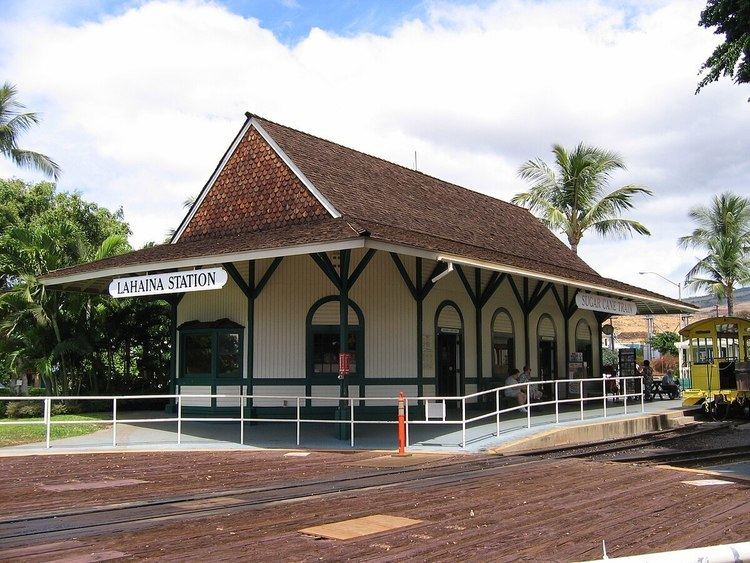Reporting mark LK&P Track gauge 3 ft (914 mm) Length 9,656 m Locale Maui County, Hawaii | Dates of operation 1970 (1970)– Phone +1 808-667-6851 Date of operation 1970 | |
 | ||
Address 17 Kaka'alaneo Dr, Lahaina, HI 96761, USA Similar Maui Ocean Center, West Maui Mountains, MGM Grand Adventur, Iao Valley, Kahekili Beach Park Profiles | ||
Lahaina kaanapali and pacific railroad
The Lahaina, Kaanapali and Pacific Railroad (LKPRR) is a steam-powered, 3 ft (914 mm) narrow gauge heritage railroad in Lāhainā, Hawaii. The LKPRR operated the Sugar Cane Train, a 6-mile, 40-minute trip in open-air coaches pulled by vintage steam locomotives. The tracks connect Lahaina with Puukolii, stopping briefly at Kaanapali. A narrator points outs sites of interest during the trip, which crosses a 325-foot curved wooden trestle whose elevation yields panoramic views of neighboring islands and the West Maui Mountains. The train is set to reopen in 2017.
Contents
History
The line follows a 6-mile stretch of historic right-of-way originally constructed to haul sugarcane from the sugarcane plantation fields in Kāʻanapali to the Pioneer Mill in Lahaina. At one time, the island had over 200 miles of rails connecting the sugarcane plantations to the mills. Trucks, however, largely replaced the railroads by the middle 20th century. In 1969, A.W. "Mac" McKelvey and the Makai Corporation created the railroad in order to illustrate this part of Hawaii's past.
On July 24, 2014, the company announced that it would be closing on August 1, 2014 due to a financial decision by the owners. The company was planning to remove the tracks and sell them off to another location. The locomotives were cleaned out and left in the shed.
Within months of closing, the Sugar Cane Train was bought by a local Maui resident and is in now the process of being revived. Craig Hill owner of Maui Concierge Services felt that the Sugar Cane Train needed to be kept running in order to preserve one of Lahaina's best known attractions and to keep the idea of the Sugar Cane Train alive. The Sugar Cane Train website now states that the train is hoping to be reopening in 2017. Donations are now being accepted in hopes that there will be enough funding to be able to run the railroad once again.
The company plans to rebuild all 3 locomotives from the ground up, as well as add possible grade crossings to prevent any accidents. Plans for the Sugar Cane Train also includes hosting weddings as well as having an evening train. All old tracks are being removed and are in the process of being replaced by newer ties and rails.
